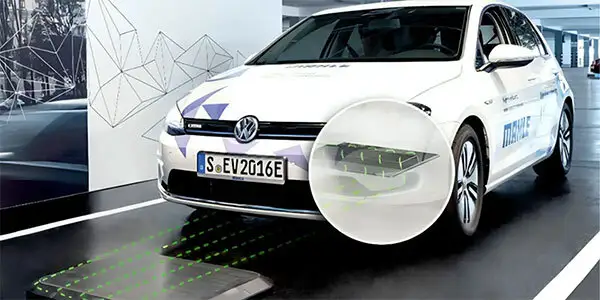In 2023, the electric vehicle (EV) industry is buzzing with technological advancements, but one innovation stands out for its potential to transform urban landscapes—wireless EV charging. Imagine driving through a city where your car charges as you drive or park, without the need for cumbersome cables. According to a recent report by Bloomberg Green, wireless EV charging is set to grow exponentially, with projected installations increasing by 25% annually over the next decade. In this article, we explore how wireless EV charging is revolutionizing urban infrastructure, what this means for the future of mobility, and how you can be part of this electrifying transformation.
The Rise of Wireless EV Charging
What is Wireless EV Charging?
Wireless EV charging, also known as inductive charging, uses electromagnetic fields to transfer energy between a charging pad on the ground and a receiver on the car. This technology eliminates the need for physical connectors, offering a seamless charging experience. As reported by TechCrunch, companies like WiTricity and Plugless are leading the charge, collaborating with automakers such as BMW and Hyundai to integrate this technology into their vehicles.
How It Works
- Charging Pads: Installed in parking spaces or embedded in roadways, these pads generate an electromagnetic field.
- Receivers: Installed in the EV, these receive the energy and convert it into electricity to charge the battery.
- Efficiency: Current systems achieve up to 90% efficiency, close to traditional plug-in chargers.
Benefits Over Traditional Charging
- Convenience: No more plugging and unplugging cables.
- Aesthetic Appeal: No visible infrastructure, preserving urban landscapes.
- Safety: Reduced risk of tripping hazards and electrical faults.
Transforming Urban Infrastructure
Integration with Smart Cities
Wireless EV charging is a cornerstone of smart city development. InsideEVs highlights how cities like Oslo and Los Angeles are piloting wireless charging in public transport and taxi fleets, demonstrating the feasibility of large-scale deployment. These initiatives aim to:
- Reduce Traffic Congestion: Dynamic charging allows vehicles to charge while moving, decreasing downtime.
- Support Public Transport: Buses and trams can charge at stops, ensuring constant availability.
- Enhance Urban Planning: Charging infrastructure can be integrated with existing roadways, minimizing disruption.
Environmental Impact
The International Energy Agency (IEA) estimates that wireless charging can reduce CO2 emissions from the transportation sector by up to 30% by 2030. This is achieved through:
- Increased EV Adoption: Simplifying charging increases consumer interest in EVs.
- Optimized Energy Use: Smart grids can manage energy distribution efficiently, minimizing waste.
Economic Implications
- Job Creation: Installation and maintenance of wireless systems will create new jobs in tech and infrastructure.
- Business Opportunities: Companies can offer charging-as-a-service, tapping into new revenue streams.
Practical Guide to Wireless EV Charging
How to Charge Your EV Wirelessly
- Compatibility: Ensure your EV is equipped with a wireless charging receiver.
- Locate Charging Stations: Use apps like PlugShare to find nearby wireless charging spots.
- Alignment: Park your vehicle over the charging pad, aligning it with the guidance system.
- Monitor Charging: Use your vehicle’s interface to check charging status and efficiency.
Where to Buy Wireless Charging Equipment
- Automakers: Brands like Tesla and Hyundai offer factory-installed wireless charging options.
- Aftermarket Solutions: Companies like Plugless provide retrofit kits for existing EVs.
What to Compare
- Charging Speed: Compare kilowatt ratings for faster charging.
- Cost: Balance installation costs with potential savings on charging fees.
- Compatibility: Ensure your vehicle model is supported by the charging system.
Conclusion: Embracing the Future of Mobility
As wireless EV charging continues to evolve, it promises to reshape urban infrastructure, making cities cleaner, smarter, and more efficient. This technology not only enhances the convenience of owning an electric vehicle but also paves the way for sustainable urban planning. Are you ready to embrace this wireless future? Share your thoughts or experiences with wireless EV charging in the comments below. Looking ahead, as more cities and automakers adopt this technology, we can expect a remarkable shift in how we perceive and interact with urban spaces, driving us toward a more sustainable future.

